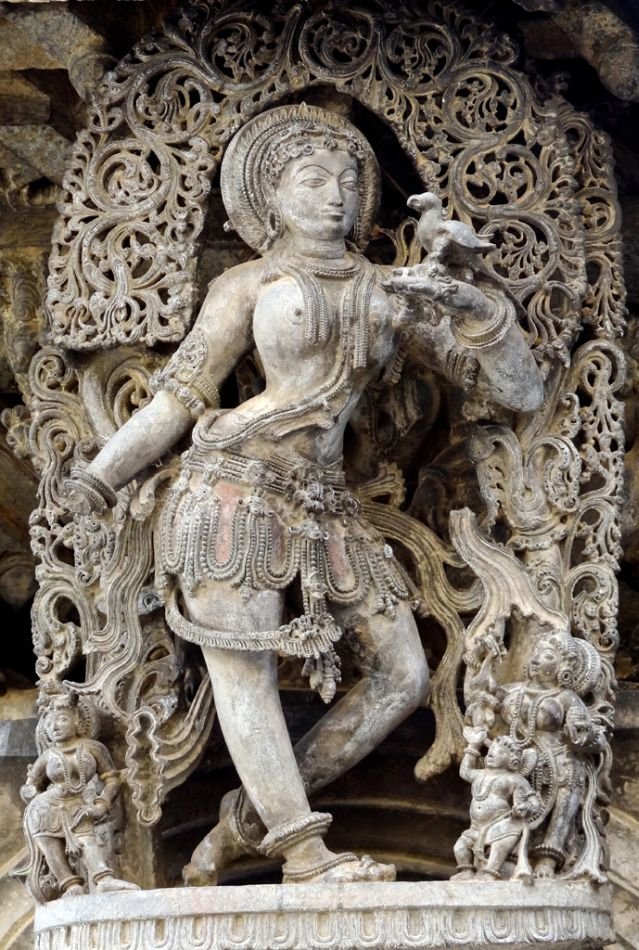(This article is part of our ongoing series, Ragas to Riches, a collection of my favourite Ragas. The rest of the articles in the series, although unrelated to this one, can be found here)
Khamaj, the raga that we will enjoy together today, is not one to be dissected technically. A raga, vast, majestic and quite unfairly relegated to the Kshudra Prakriti ( Lighter nature ragas), Khamaj is arguably the king of romance. Hence, we will not discuss the jati, the vadi/samvadi, aur any other mundane details of the raga. To do so is akin to butchering the spirit of flavourful romance of Khamaj and we won’t be doing any of that. Although for those still interested, technicalities of the raga can be found here.
We will be listening to Ustad VIlayat Khan’s regal rendition of Khamaj from his performance at the Berlin Fest(Year unknown). Khan Sahab appears to be at the peak of his prowess, as attested by the clarity of notes and the extraordinary virtuosity of his diction.
The Aftab-e-Sitar, as he is reverently called, starts with a delicate alaap. At 2:05, the alaap is marked by signature Vilayat Khan style , full of feeling and surrender. What strikes me the most in his alaap over the years, is that the phrases are always telling a story. There is a circularity to them, with seemingly independent phrases actually being inter-connected, as if woven by the same piece of thought. Simultaneously, at a deeper level, there is a progression to them, as if these circular and yet independent phrases are marching towards a common crescendo.
The sudden infusion of low notes at 3:15 for a second or two, as if used to complement the higher notes of the alaap confirm why he was the maestro and the novel creator of the innovative Gayaki Ang (a style aiming to replicate the nuances of the human voice on the instrument, as opposed to the Tantrakari ang, which retains the instrumental touch). It hadn’t been done with this ease before him and after him, the style is undoubtedly ubiquitous.
At 5:06, he takes a signature Khamaj phrase, puts a break for about 5 seconds, and completes the phrase with a quick and clear progression of notes that takes one’s breath away. I want to bring your attention to the most musical part of this sequence- the 5 seconds sans any music. The legendary Ustad Alladiya Khan Sahab used to say that the silence between two notes is also musical- that’s where the real music happens. I have seen several musicians iterate this, but Ustad Vilayat Khan applies this to the max. At 6:30, he takes another sets of notes and ends with a meend (glide), that is so characteristic of Sitar playing today, but was nearly explored when he was doing it half a century ago.
By the time, he moves on to the faster sequence of notes, he has managed to completely establish Khamaj’s aesthetics. He moves on to show his skill and command over the instrument as he moves along the scale of the raga with supreme ease. That’s why Vilayat Khan is the supreme maestro. He can do what he did with the alaap with his sheer imagination and sense of story telling and then he can also surprise you with his unparalleled command over the instrument and clarity in speed. At 16:00, he comes back to the former with some beautiful slow phrases.
At 18:10, he takes the popular Khamaj phrase- “Pa Dha Sa Re Ga Ma Ga.”, starting from the middle octave and ending at the higher octave. The next few minutes where he strolls leisurely around the higher notes aren’t just musically perfect, but also a testament of his inventiveness with the Sitar. He created the “Vilayatkhani Sitar”, changing the tonal texture through sheer ingenuity, removing the top gourd, reshaping the bottom gourd for more resonance, and increasing the curvature of the frets . The latter helped him achieve voice-like range with the Sitar, especially in the higher notes. The next few minutes are a testament to this.
After a few minutes of an energetic jhala, he present a gat in drut Teentaal. The gat is fresh, authentic and carries the essence of Khamaj’s fragrance. The gat is every bit as exquisite as the alaap, jod and jhala that precede it. After a few minutes of light layakari around the structure of the gat, Khan instructs the tabla accompanist to increase the laya (pace). Thereafter, Khan proceeds to display breathtaking taans along with an impeccable sense of timing of sam, the first beat of the 16-beat cycle. He finishes his recital with a swift tihaai, followed a rapturous applause from an enthusiastic audience.
As I wrap up, still mesmerised by the rendition, I cannot help but let my mind wander into a different tangent of thought. I have always thought of this blog as my way of giving back to Hindustani Classical music, especially because this music has given me so much. But then there are days like these, where I get immersed in music as soothing and heavenly as this. On such days, I stop at every juncture of the rendition I am writing about to describe it to you, the reader . In the process, as I appreciate the music more and more, I find myself closer to the true essence of it all. At that very moment, the mind and music is one. And that’s when I realise- this blog is not my way of giving back to Music, it is Music’s way of giving me even more, like it always has.





